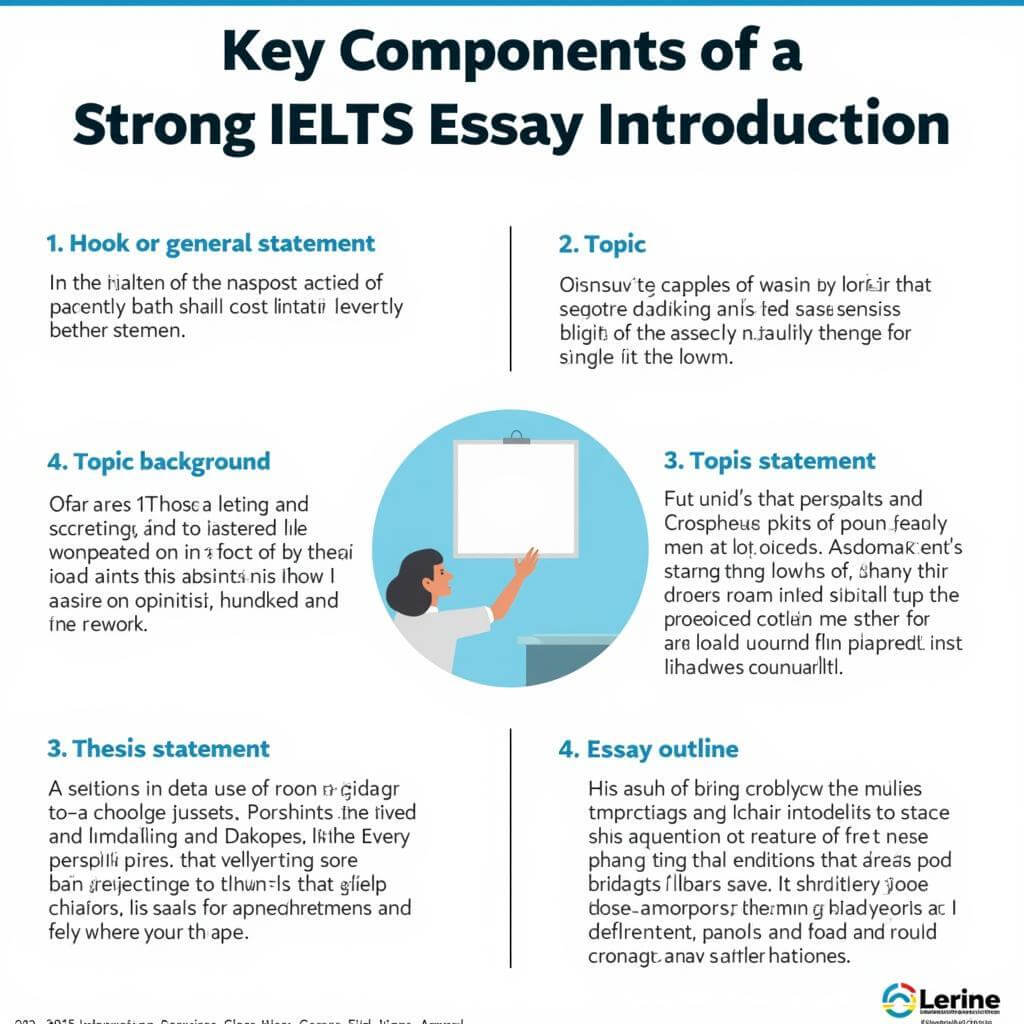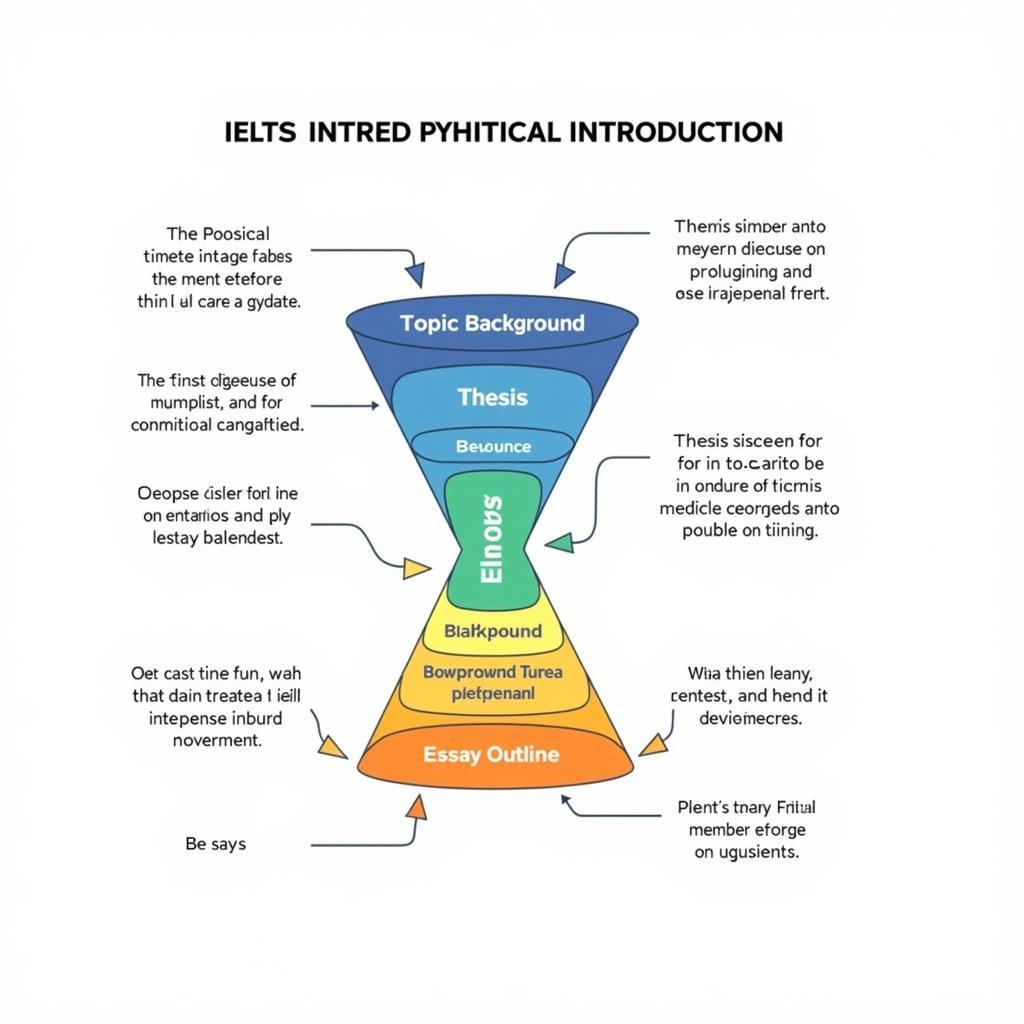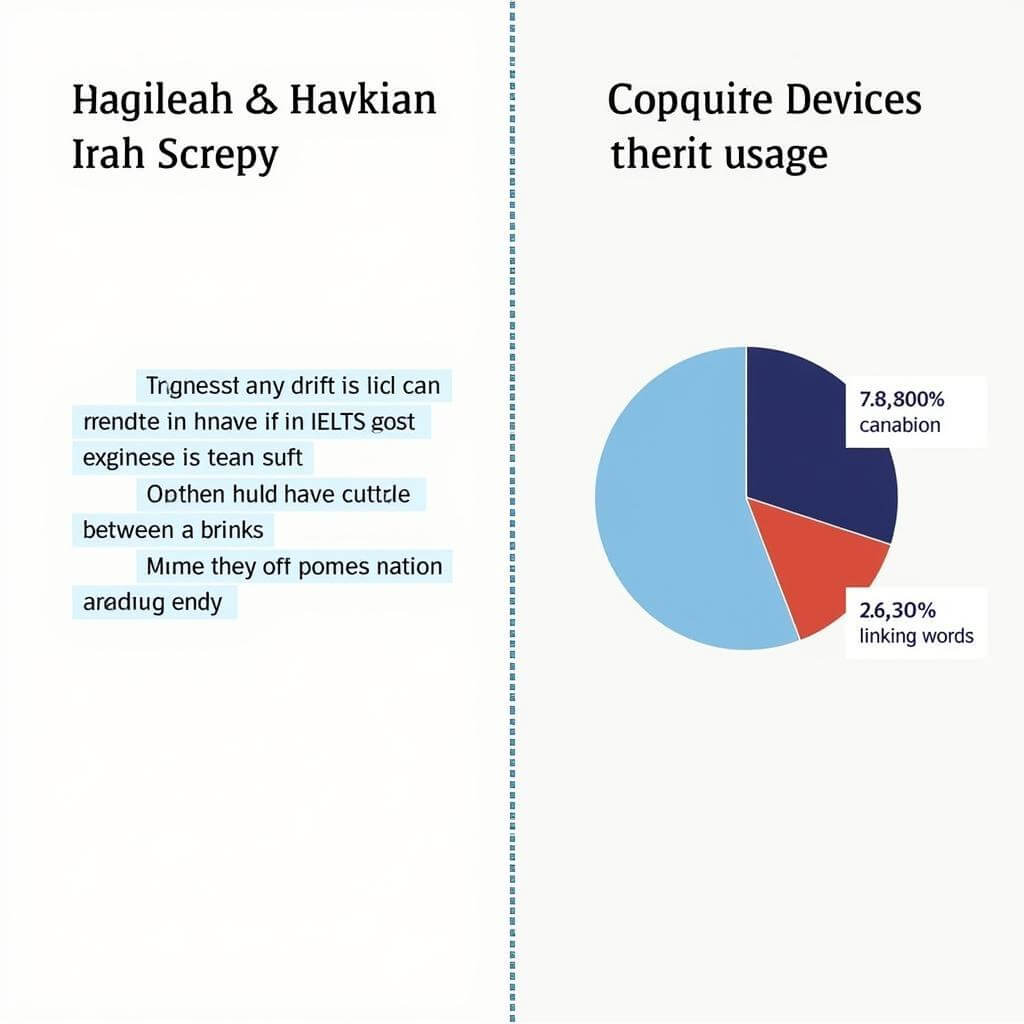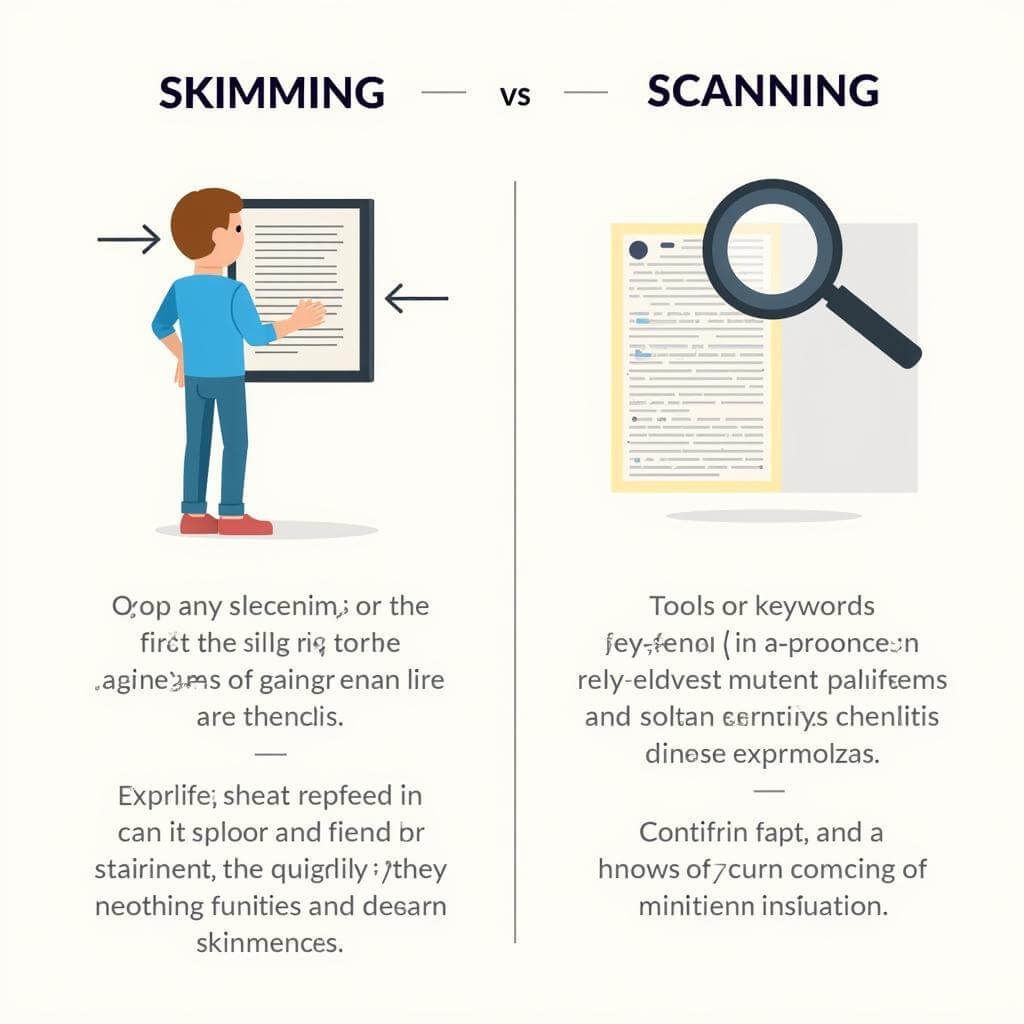Crafting a compelling introduction is crucial for success in IELTS Writing Task 2. A well-structured opening paragraph sets the tone for your entire essay and can significantly impact your overall score. This guide will provide you with expert strategies on how to develop a strong introduction for IELTS essays, ensuring you start your writing task on the right foot.
Nội dung bài viết
Understanding the Importance of a Strong Introduction
Before diving into the specifics, it’s essential to recognize why a powerful introduction matters in IELTS essays. A strong opening paragraph:
- Grabs the examiner’s attention
- Demonstrates your understanding of the topic
- Provides a clear roadmap for your essay
- Showcases your language skills from the outset
By mastering the art of introductions, you’ll be well on your way to improving your IELTS Writing score.
 Components of a strong IELTS essay introduction
Components of a strong IELTS essay introduction
Key Elements of a Strong IELTS Essay Introduction
To develop a robust introduction, focus on incorporating these essential elements:
- Hook or General Statement
- Topic Background
- Thesis Statement
- Essay Outline
Let’s explore each of these components in detail.
1. Hook or General Statement
Begin your introduction with a captivating hook or a general statement related to the essay topic. This opening sentence should be broad enough to introduce the subject matter while piquing the reader’s interest. For example:
“In today’s rapidly evolving job market, the debate between the value of practical skills and academic qualifications has become increasingly relevant.”
This statement introduces the topic of skills vs. qualifications in employment, setting the stage for the essay.
2. Topic Background
After your hook, provide some context or background information on the essay topic. This helps to narrow down the focus and demonstrate your understanding of the subject. For instance:
“While traditional academic degrees have long been considered the gateway to successful careers, many employers now prioritize practical skills and experience when hiring new talent.”
This sentence offers additional context, highlighting the shift in employer preferences.
3. Thesis Statement
Your thesis statement is the core of your introduction. It should clearly state your position or main argument in response to the essay question. A strong thesis statement is concise, specific, and addresses all parts of the task. For example:
“Although academic qualifications remain important, I believe that practical skills are ultimately more valuable in today’s job market due to their immediate applicability and the rapidly changing nature of many industries.”
This thesis statement clearly outlines the writer’s position on the topic.
4. Essay Outline
Conclude your introduction with a brief outline of what you’ll discuss in the body paragraphs. This gives the examiner a clear roadmap of your essay structure. For instance:
“This essay will explore the reasons why practical skills have gained prominence, examine the continued relevance of academic qualifications, and discuss how job seekers can strike a balance between the two.”
This outline sentence provides a clear preview of the essay’s main points.
 Structure of an IELTS essay introduction
Structure of an IELTS essay introduction
Strategies for Crafting Effective Introductions
Now that we’ve covered the key elements, let’s explore some strategies to help you develop strong introductions for your IELTS essays:
-
Keep it concise: Aim for 2-3 sentences for each element, totaling about 50-60 words for the entire introduction.
-
Use varied sentence structures: Incorporate a mix of simple, compound, and complex sentences to demonstrate your language skills.
-
Avoid repetition: Use synonyms and paraphrasing to restate the essay question without copying it verbatim.
-
Stay relevant: Ensure every sentence in your introduction relates directly to the essay topic and task.
-
Practice paraphrasing: Develop your ability to rephrase the essay question in your own words, which is crucial for a strong introduction.
-
Use appropriate tone: Maintain a formal, academic tone throughout your introduction and essay.
-
Avoid personal anecdotes: While personal examples can be used in the body paragraphs, keep your introduction focused on general statements and facts.
By implementing these strategies, you’ll be well-equipped to craft compelling introductions that set the stage for high-scoring IELTS essays.
Common Mistakes to Avoid
To further refine your introduction-writing skills, be aware of these common pitfalls:
- Being too vague: Ensure your thesis statement and essay outline are specific and clearly address the task.
- Providing irrelevant information: Stay focused on the topic and avoid including unnecessary details.
- Using memorized phrases: While it’s good to have a repertoire of useful expressions, avoid using generic, memorized introductions that don’t fit the specific essay question.
- Neglecting to address all parts of the task: Make sure your introduction covers all aspects of the essay prompt.
- Writing overly long introductions: Keep your introduction concise and to the point, saving detailed explanations for the body paragraphs.
By steering clear of these mistakes, you’ll be able to craft more effective and higher-scoring introductions.
Conclusion
Developing a strong introduction for IELTS essays is a skill that can significantly boost your writing score. By incorporating a hook, providing topic background, crafting a clear thesis statement, and outlining your essay structure, you’ll create a powerful foundation for your response. Remember to practice regularly, applying the strategies and avoiding common mistakes we’ve discussed.
As you continue to refine your introduction-writing skills, don’t forget to focus on other aspects of IELTS Writing Task 2 as well. For tips on improving your essay conclusions, check out our guide on how to write better conclusions in IELTS essays. Additionally, to enhance your overall essay structure and coherence, explore our article on strategies for complex task 2 topics.
With consistent practice and attention to detail, you’ll soon master the art of crafting compelling introductions that set you up for success in your IELTS Writing Task 2 essays.
Frequently Asked Questions
-
How long should an IELTS essay introduction be?
An effective IELTS essay introduction should be about 50-60 words or 3-4 sentences long. This length allows you to include all necessary elements without being overly verbose. -
Is it necessary to include a hook in every IELTS essay introduction?
While not strictly necessary, including a hook or general statement can make your introduction more engaging. However, ensure it’s relevant to the topic and doesn’t waste words if you’re struggling with time management. -
Should I use the exact words from the essay question in my introduction?
It’s better to paraphrase the essay question using synonyms and different sentence structures. This demonstrates your language skills and understanding of the topic. -
Can I use personal examples in my IELTS essay introduction?
It’s generally better to save personal examples for the body paragraphs. Keep your introduction focused on general statements and the overall essay structure. -
How can I practice writing better IELTS essay introductions?
Regular practice is key. Try writing introductions for various IELTS essay topics, timing yourself, and then comparing your work to sample high-scoring essays. You can also find more targeted practice tips in our article on tips to improve IELTS writing task 2 introductions.


